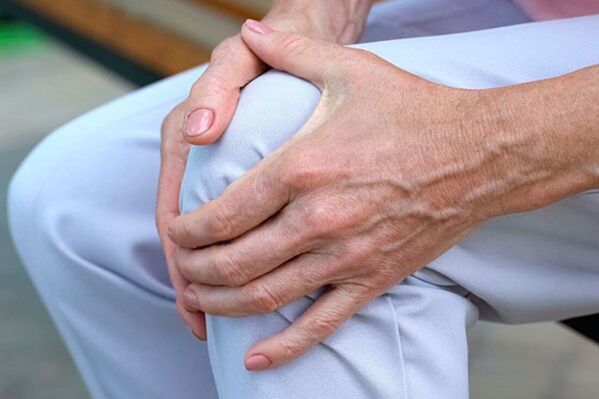
There are more than 180 joints in the human body and they injure almost everyone. Diagnoses sound different, other treatments are recommended, but the pain does not go away, it just increases with age, the relief is temporary.
There is still no consensus in the medical community about this disease, including methods of treatment.
What is osteoarthritis of the joints?
This is a whole group of diseases of a polyetiological nature, in which all parts of the joint are destroyed.
Causes of Osteoarthritis
There are many of them and they are not fully understood.
- Osteoarthritis develops after an injury. For example, if the knee joint is damaged, osteoarthritis of the knee or gonarthrosis occurs.
- Postponed arthritis. Arthritis is inflammation of the joint. It can be a complication even after ARVI or the result of a specific infection: gonorrhea, tuberculosis, brucellosis, with viral hepatitis, adenovirus infection, rubella, HIV infection.
- High level of physical activity is a professional problem for athletes. For a normal person, any burden can become stressful and "start" the process.
- Autoimmune diseases: osteoporosis, rheumatoid arthritis, gout, arthropathy, chronic fatigue syndrome.
- Musculoskeletal disorders. For example, dysplasia can be one of the causes of osteoarthritis of the hip joint.
- Obesity.
- Harmful working conditions.
- Alcohol and bad habits.
The list is incomplete, but quite impressive.
Osteoarthritis symptoms
The symptoms of osteoarthritis are numerous, but the most important one is pain.
Osteoarthritis pain occurs first with physical exertion and decreases when you are at rest. They arise from microfractures, cramps in the periarticular muscles, and irritation of the surrounding tissue from osteophytes. When synovitis develops, the joint swells, pain appears with the very first movements, then disappears, and reappears with prolonged exertion.
A necrotic osteophyte (a torn piece of articular cartilage) "wedges" the joint, causing severe pain, crunching and external changes, and making habitual movements difficult.
Classification level one: movements in the joint are moderately restricted, pain only occurs during exertion, insignificant bone growths are visible on X-rays, narrowing of the joint space is slight. Stage two: The mobility of certain joints is clearly restricted, a crunch occurs. The pain occurs with the simplest of movements. With osteoarthritis of the leg joints, lameness occurs due to shortening of the extremities, distortion of the pelvic area, pain in the legs and lower back. The pictures show that the joint space is reduced three times, the bone growths are rough, the joint surfaces are damaged. Stage 3: The joint is destroyed, with osteoarthritis on both sides - movement is only possible on crutches.
classification
- Stage one: movements in the joint are moderately restricted, pain occurs only when exerting, insignificant bone growths are visible on X-rays, narrowing of the joint space is slight.
- Stage two: The mobility of certain joints is clearly restricted, a crunch occurs. The pain occurs with the simplest of movements. With osteoarthritis of the leg joints, lameness occurs due to shortening of the extremities, distortion of the pelvic area, pain in the legs and lower back.
- Stage 3: The joint is destroyed, with osteoarthritis on both sides - movement is only possible on crutches.
diagnosis
Osteoarthritis of the knee and hip joint arthrosis (coxarthrosis) are the most common diagnoses.
Instrumental examination for osteoarthritis:
- Radiography - to assess the condition of the bone tissue.
- Magnetic resonance imaging or computed tomography - the degree of destruction of the joint and its parts is determined.
- Arthroscopy.
Osteoarthritis treatment
Conservative treatment (only in the early stages):
- NSAIDs - nonsteroidal anti-inflammatory drugs, anti-inflammatory and warming ointments, orthotics of the joints.
- Physiotherapy - to relieve pain and improve blood circulation.
- Chondroprotectors - you could say biologically active additives with a placebo effect.
- Chondroprotectors with NVPS - relief is felt immediately (anti-inflammatory effect), treatment takes longer.
- Hormonal drugs
- Hyaluronic acid preparations are a fully-fledged "prosthesis" for the synovial fluid.
- Plasma treatment - PRP therapy, orthokine therapy.
Operative treatment
- Endoprosthetics - replacement of articular surfaces.
- Endoprosthetics is a method for small and uncontrolled wrists.
- Arthroscopy.
prophylaxis
Prevention of osteoarthritis, like many complex diseases, is timely treatment of infections and careful management of your health.





















